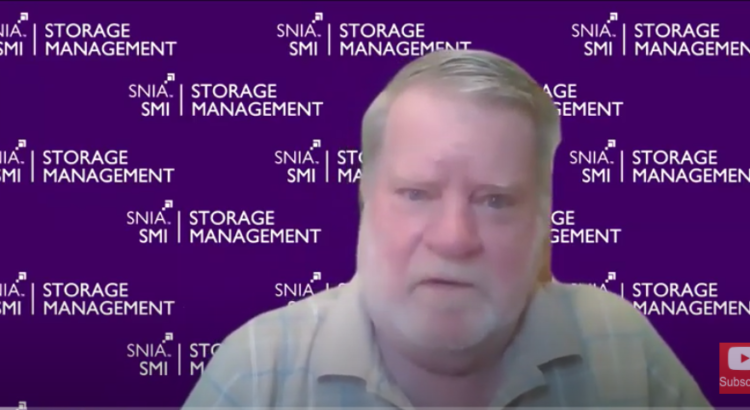


Q&A on the Ethics of AI

Continuous Delivery: Cloud Software Development on Speed
Q&A from “SAS 201: An Introduction to Enterprise Features” Webcast
Questions from SAS 201 Webinar Answered
In an effort to provide ongoing educational content to the industry, the SCSI Trade Association (STA) tackled the basics of Serial Attached SCSI (SAS) in a webinar titled “SAS 201: An Introduction to Enterprise Features,” now available on the STA YouTube channel here.
Immediately following their presentations, our experts Rick Kutcipal of Broadcom and Tim Symons of Microchip Technology held a Q&A session. In this blog, we’ve captured the questions asked and answers given to provide you with insight on the recent evolutions in SAS enterprise features including 24G SAS and what they mean to system designers.
Q1. Do you think 24G SAS will only be applicable to SSDs, and HDDs will remain at 12Gb/s?
A1. Rick: At this time, hard disk drives (HDDs) can’t take advantage of the bandwidth that’s available in 24G SAS. And right now, the technology itself is focused on the backbone and then solid-state drive (SSD) connectivity. Currently, that’s the way we see it shaping up. Read More
Q&A from “SAS 101: The Most Widely-Deployed Storage Interface” Webcast
Questions from SAS 101 Webcast Answered
In an effort to provide ongoing educational content to the industry, the SCSI Trade Association (STA) tackled the basics of Serial Attached SCSI (SAS) in a webinar titled “SAS 101: The Most Widely-Deployed Storage Interface,” now available on demand here.
Immediately following their presentations, our experts Jeremiah Tussey of Microchip Technology and current STA Vice President; and former STA board member Jeff Mason of TE Connectivity, held a Q&A session. In this blog, we’ve captured the questions asked and answers given to provide you with the extra insight needed on why SAS remains the protocol of choice in the data center. Read More

Computational Storage in the Real World

Cloud Analytics Drives Airplanes-as-a-Service Business

SMI-S Storage Management Quick Start Guide Series Kicks-Off

NVMe® over Fabrics for Absolute Beginners
 for Absolute Beginners.” It seems to have resonated with a lot of people and it appears there might be a call for doing the same thing for NVMe® over Fabrics (NVMe-oF
for Absolute Beginners.” It seems to have resonated with a lot of people and it appears there might be a call for doing the same thing for NVMe® over Fabrics (NVMe-oF ).
This article is for absolute beginners. If you are a
seasoned (or even moderately-experienced) technical person, this probably won’t
be news to you. However, you are free (and encouraged!) to point people to this
article who need Plain English
).
This article is for absolute beginners. If you are a
seasoned (or even moderately-experienced) technical person, this probably won’t
be news to you. However, you are free (and encouraged!) to point people to this
article who need Plain English to get started.
A Quick Refresher
Any time an application on a computer (or server, or even a consumer
device like a phone) needs to talk to a storage device, there are a couple of
things that you need to have. First, you need to have memory (like RAM), you
need to have a CPU, and you also need to have something that can hold onto your
data for the long haul (also called storage).
Another thing you need to have is a way for the CPU to talk
to the memory device (on one hand) and the storage device (on the other). Thing
is, CPUs talk a very specific language, and historically memory could speak
that language, but storage could not.
For many years, things ambled along in this way. The CPU
would talk natively with memory, which made it very fast but also was somewhat
risky because memory was considered volatile. That is, if there was a
power blip (or went out completely), any data in memory would be wiped out.
Not fun. Read More
to get started.
A Quick Refresher
Any time an application on a computer (or server, or even a consumer
device like a phone) needs to talk to a storage device, there are a couple of
things that you need to have. First, you need to have memory (like RAM), you
need to have a CPU, and you also need to have something that can hold onto your
data for the long haul (also called storage).
Another thing you need to have is a way for the CPU to talk
to the memory device (on one hand) and the storage device (on the other). Thing
is, CPUs talk a very specific language, and historically memory could speak
that language, but storage could not.
For many years, things ambled along in this way. The CPU
would talk natively with memory, which made it very fast but also was somewhat
risky because memory was considered volatile. That is, if there was a
power blip (or went out completely), any data in memory would be wiped out.
Not fun. Read More
